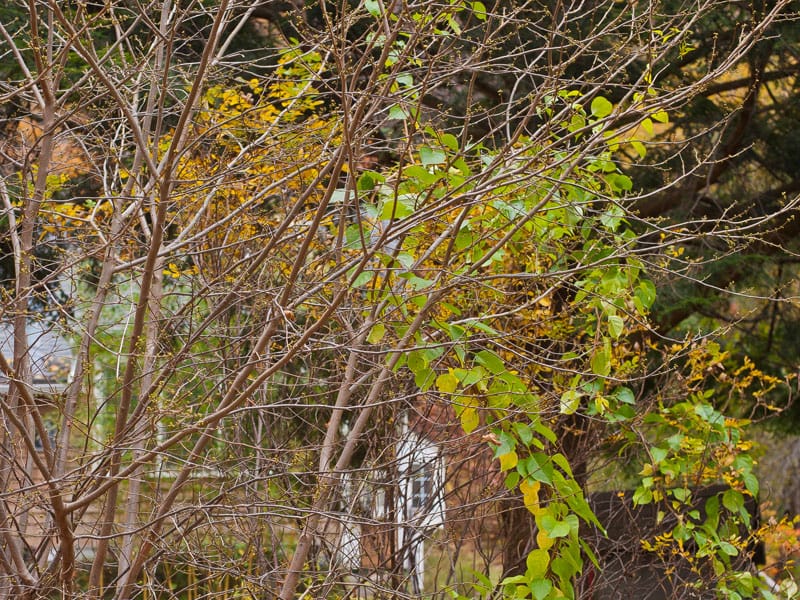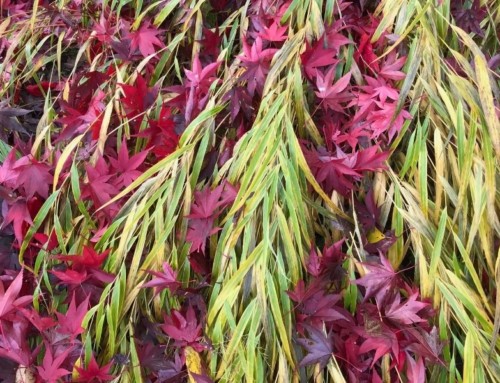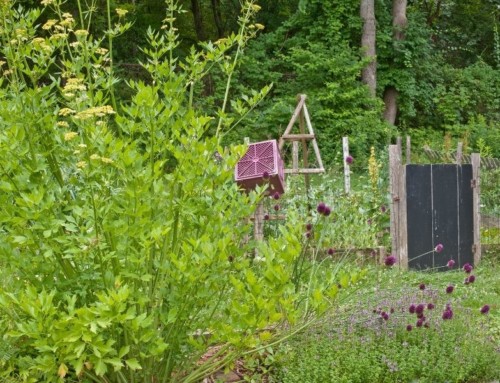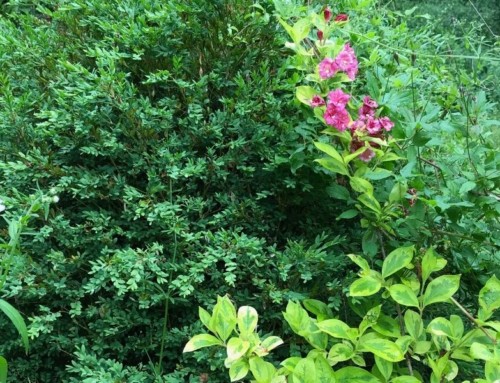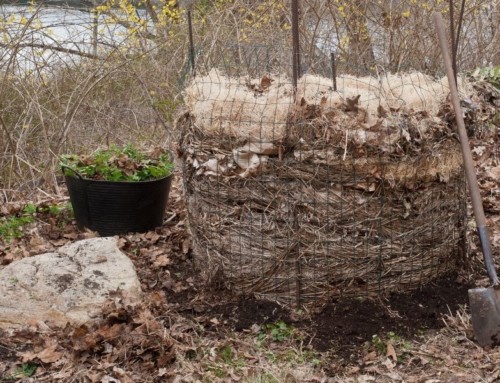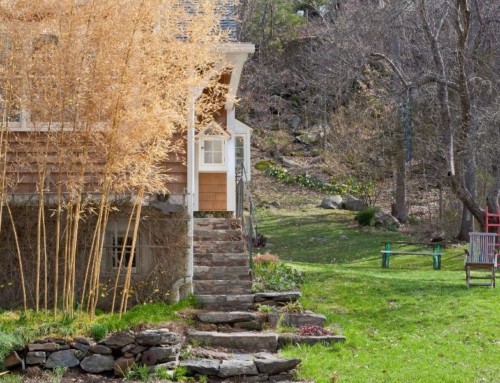Invasive plants are sneaky. Plants “from away” don’t necessarily play by the rules that knit together native plant communities. If our insects can’t feed on them, deer don’t dine, they’re immune to diseases that affect native plants and they have a longer growing season, then they have a big edge over native plant populations.
Invasives can blend right in when everything is green, but that photosynthetic edge gives them away in fall. Leaves that remain green or put on a show after natives have dropped theirs stand out in a drab landscape. Even this late in the year I’ve noticed a few colorful clues that reveal where the usual suspects hid all summer. It’s a whole lot easier to get those stinkers out of our yards while they’re still small.
What to Look For
- Maples with yellow foliage, or leaves that are just fading but still hanging on – Norway maple (Acer platanoides)
- Bright yellow oval leaves with finely toothed or wavy margins, often pointed tips, attached to vines twining through shrubs – oriental bittersweet (Celastrus orbiculatus). Hopefully you won’t see masses of berries with red-orange seed covers hosting a flock of hungry robins. Check under favorite bird trees – If you find a forest of 3-4” tall thin stems under a juniper tree, check the roots – bittersweet has bright orange roots.
- Narrow oval green leaves on thin reddish-brown vines that catch your feet when threaded through low vegetation, twine up into shrubs and make big tangles – Japanese honeysuckle (Lonicera japonica)
- Here in northwestern Connecticut the burning bush, or winged euonymus (Euonymus alatus), has dropped its fiery red leaves (ripe red fruits now steal the show). But I still find little green-stemmed seedlings with bright red leaves resembling blueberry foliage hiding in leaf litter.
Read my article about Alien Invaders in Wildflower Magazine.
For more information about invasive plants, visit The Connecticut Invasive Plant Working Group (CIPWG) website.
The photo above shows bittersweet invading a spicebush.
